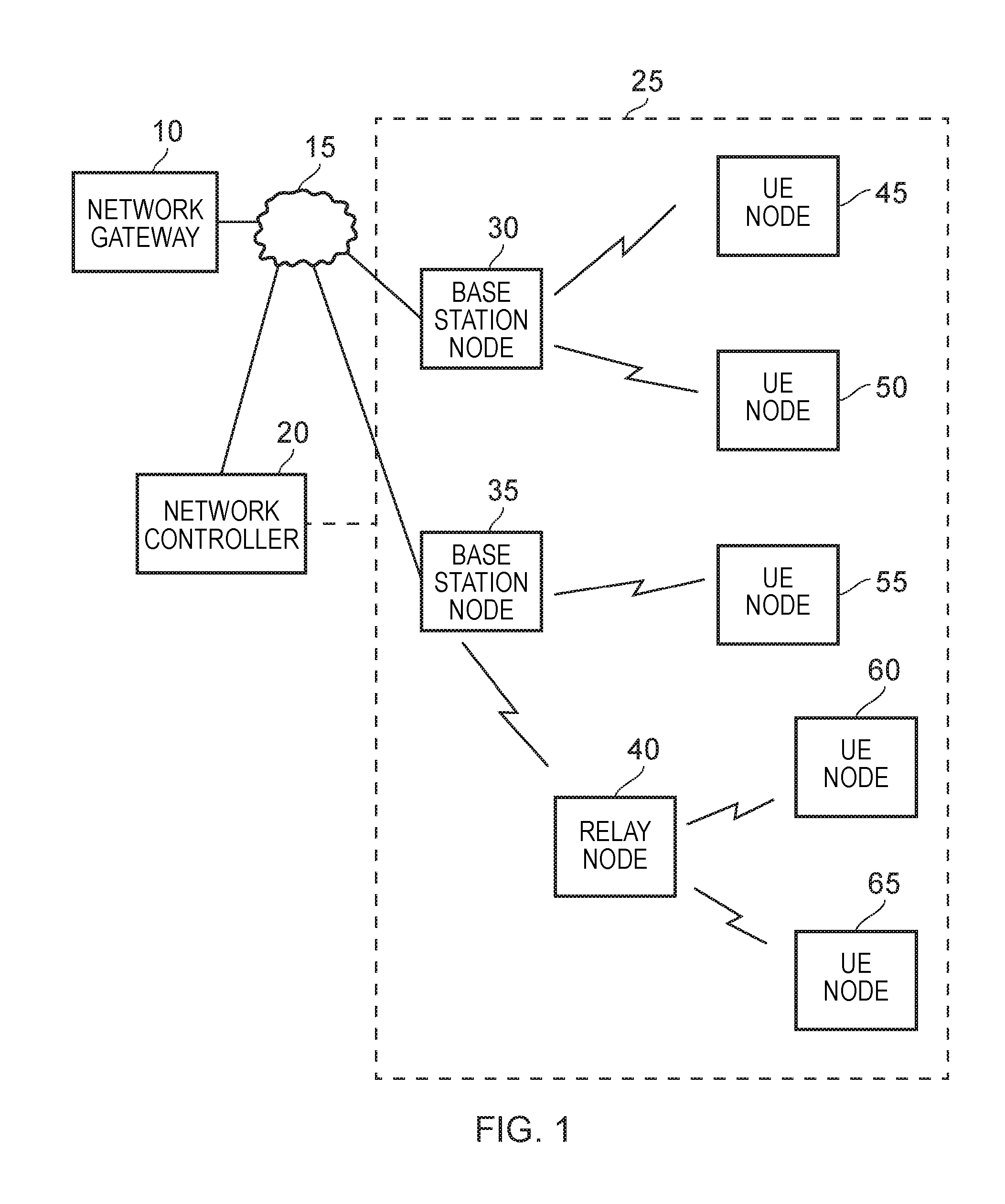System and Method for Determining Modulation Control Information and a Reference Signal Design to be Used by a Transmitter Node
a technology of reference signal and control information, which is applied in the field of system and method for determining modulation control information and reference signal design to be used by a transmitter node, can solve the problems of increasing the pilot density, affecting data throughput, and prohibitively high complexity of such a schem
- Summary
- Abstract
- Description
- Claims
- Application Information
AI Technical Summary
Benefits of technology
Problems solved by technology
Method used
Image
Examples
Embodiment Construction
[0068]FIG. 1 schematically illustrates a wireless network in which the techniques of embodiments of the present invention may be employed. As shown, a number of base station nodes 30, 35, 40 are provided to communicate via a wireless air interface with a number of mobile stations / items of end user equipment 45, 50, 55, 60, 65. The items of end user equipment may be mobile or fixed, and any one of a number of known wireless communications protocols may be used to effect the wireless links between the base station nodes and the user equipment nodes.
[0069]As also shown in FIG. 1, one or more of the base station nodes 40 may actually act as a relay node for onward transmission of communications issued by an associated base station node 35, and indeed for relaying back to the base station node 35 signals transmitted by the items of end user equipment 60, 65.
[0070]The base station nodes 30, 35 of the wireless network are typically connected via a communications infrastructure 15 with an a...
PUM
 Login to View More
Login to View More Abstract
Description
Claims
Application Information
 Login to View More
Login to View More - R&D
- Intellectual Property
- Life Sciences
- Materials
- Tech Scout
- Unparalleled Data Quality
- Higher Quality Content
- 60% Fewer Hallucinations
Browse by: Latest US Patents, China's latest patents, Technical Efficacy Thesaurus, Application Domain, Technology Topic, Popular Technical Reports.
© 2025 PatSnap. All rights reserved.Legal|Privacy policy|Modern Slavery Act Transparency Statement|Sitemap|About US| Contact US: help@patsnap.com



